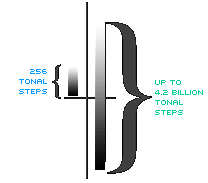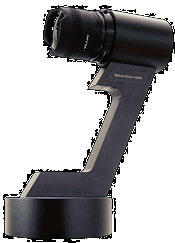How we do it

The High Dynamic Range images can be used to capture and record a much wider range of brightness values than regular image formats. With up to 96 bits per pixel, it can have millions of brightness levels instead of the more usual 256 – making it an ideal choice for rendering with image-based lighting.
But, all HDRi's are not equal. Some are produced just for fun with the simplest of equipment with little regard for content – a basic digital camera and a shiny bauble. Some have a restricted dynamic range. Some are very poor quality, photographing the reflection from a ball bearing with smears and scratches clearly visible. Others are just painted shapes in two dimensions that bear very little relation to any real world light values let alone how a photographer would set up a scene.
How do you know what you are getting?

When we created our products, our priority was to get great studio lighting along with the maximum possible capture quality. Choosing Spheron VR, the leading HDR camera manufacturer, we went to Germany and spent time with the founders. Their passion for accuracy and commitment to quality was impressive. With their camera, we could concentrate on the content and be sure that the dynamic range was exceptional – here was and incomparable twenty six f-stops of exposure data in a single pass.
Then, we went to a professional photo studio. For product photography, these are rooms that are painted black – referred to as a 'blacked-out' studio. First, we arranged large softbox lights around some generic objects. The lighting cameraman spent some time getting the lighting just right, balancing the exposures and using a light meter to make sure the light output from the softboxes was precise. When this was ready, we replaced the object with the Spheron camera and recorded the lighting in a single pass. We did this many times with different light set-ups, taking great care at every stage.
Once captured the images still needed to be retouched. In a studio, you have a lot of things going on in the background that you don't necessarily want. You are looking at the world from the virtual objects perspective not the camera's. You have tripods, leads, clips etc. even black brickwork detail in the corners of the room. None of this contributes to the lighting and just bloats the file size, so we remove it leaving the important stuff, the lights, intact.



Then we tested. Did all the files work as expected? Could we sell them confident that the 3D artists would get what they wanted? The images in the gallery were the tests. The models were simple Maya scenes and were lit using only the files we sell with no additional retouching.
The idea was to sell files in an a la carte way. You only buy the file or files you need, not the ones you don't. You require HDRi images to get a particular job done now, not in a day or so. That's why we offer instant download from the Web.
Then came the first sales. We waited and had some great feedback. It worked!
We have not stopped. We are currently developing exciting new solutions and we will be making announcements shortly.
Thanks to all our customers, especially those early adopters, who got the idea very quickly. We greatly value your feedback.

